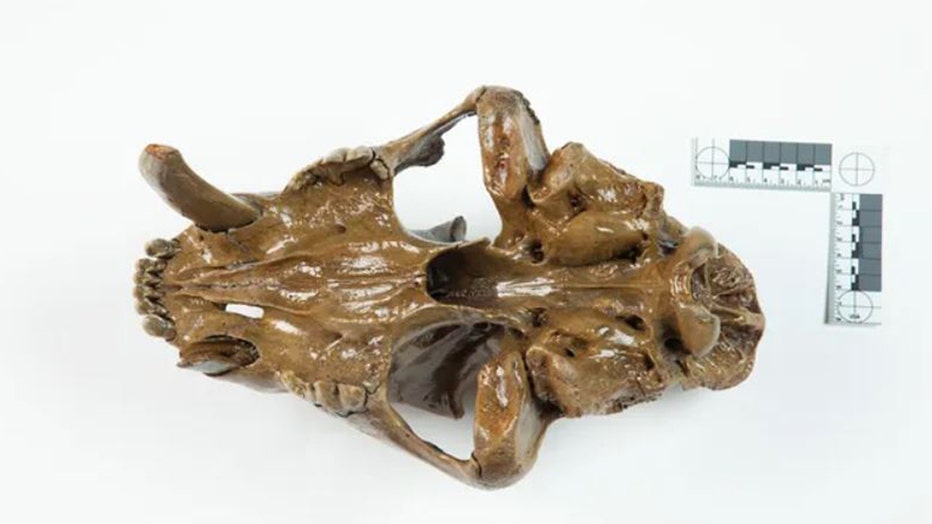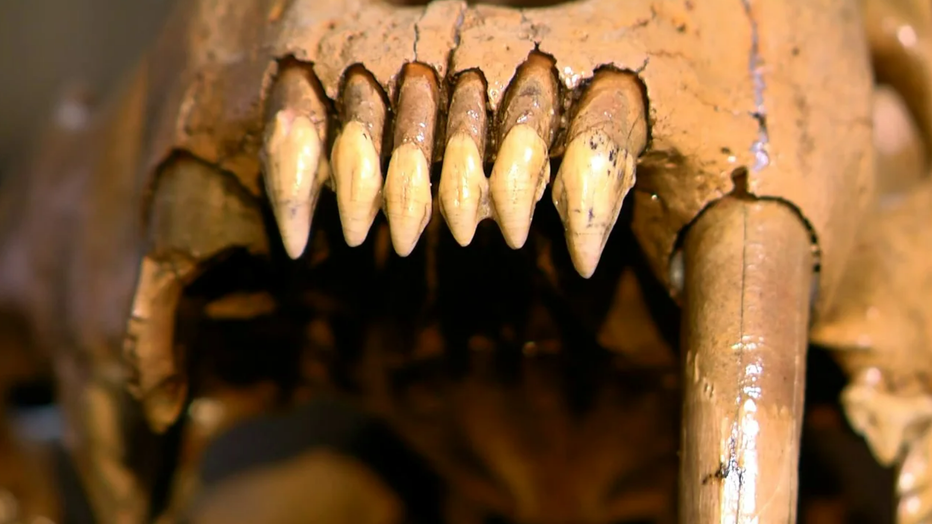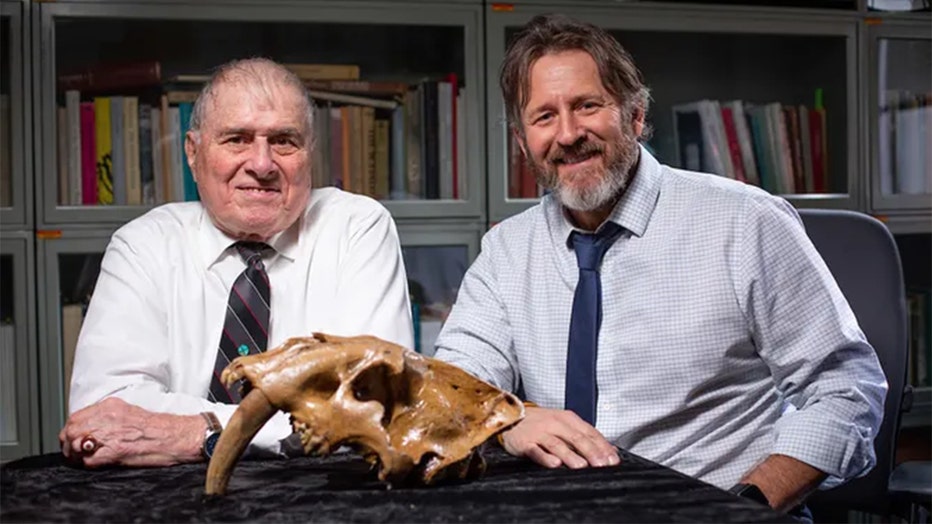Prehistoric sabertooth skull found in Iowa likely last of species to walk Earth, researchers say

Sabertooth cat skull found in Iowa
A recent discovery of a complete sabertooth cat skull in southwest Iowa is the first known evidence of the animal in the state. (Credit: FOX Weather)
AMES, Iowa - A well-preserved sabertooth cat skull found in southwest Iowa may have been one of the last of the species to walk the planet as glaciers receded and temperatures rose, according to researchers.
Radiocarbon dating indicates the male cat died at the end of the Ice Age between 13,605 and 13,460 years ago before getting buried in the East Nishnabotna River, according to Matthew Hil, an associate professor of archaeology at Iowa State and expert on animal bones.
Hill analyzed the specimen along with David Easterla, professor emeritus of biology at Northwest Missouri State University. Their findings were recently published in Quaternary Science Reviews.
Hill said the chance of finding any fossilized remains from a sabertooth cat is slim, and finding one in Page County is even rarer.

Ventral side of sabertooth cat skull (Credit: Christopher Gannon/Iowa State University)
"The skull is a really big deal," he added. "Finds of this animal are widely scattered and usually represented by an isolated tooth or bone. This skull from the East Nishnabotna River is in near-perfect condition. It’s exquisite."
OLDEST SEA REPTILE REMAINS FROM 2 MILLION YEARS AGO FOUND ON ARCTIC ISLAND
The animal was about 2 to 3 years old and well over 500 pounds at its death, evidence from the skull shows. According to the university, this suggests that this sabertooth cat was potentially much bigger than most of the cats found in southern California.
Hill and Easterla think southwest Iowa during this period was a parkland with patches of trees interspersed with grassy openings, somewhat similar to central Canada today.

Photo of teeth from skull. (Credit:
"The cat would have lived alongside other extinct animals like dire wolf, giant short-faced bear, long-nosed peccary, flat-headed peccary, stag-moose, muskox, and giant ground sloth, and maybe a few bison and mammoth," he said.
'I COULDN’T BELIEVE WHAT I WAS LOOKING AT': RECORD-BREAKING DINOSAUR FOOTPRINT UNEARTHED IN ENGLAND
How the sabertooth cat died is unclear, but a broken canine on the skull might offer a clue, researchers say. Hill and Easterla speculate that prey seriously injured the animal, ultimately leading to his death.

Dave Easterla, left, Distinguished University Professor Emeritus of Biology at Northwest Missouri State University and Matthew Hill, associate professor of anthropology at Iowa State, with a fossilized complete skull from a sabertooth cat from southw
"We can learn a lot from these types of fossils. They hold clues about the ecology of the animals and how they respond to dramatic climate change and the appearance of a new predator and competitor on the landscape, including people," Hill said.
Hill said he hopes to learn more about what animals in Iowa ate by using chemical signatures in the fossil itself.
"Iowa is a fantastic laboratory to do research on extinct Ice Age animals and the people who were just beginning to share the landscape with them," he said.

